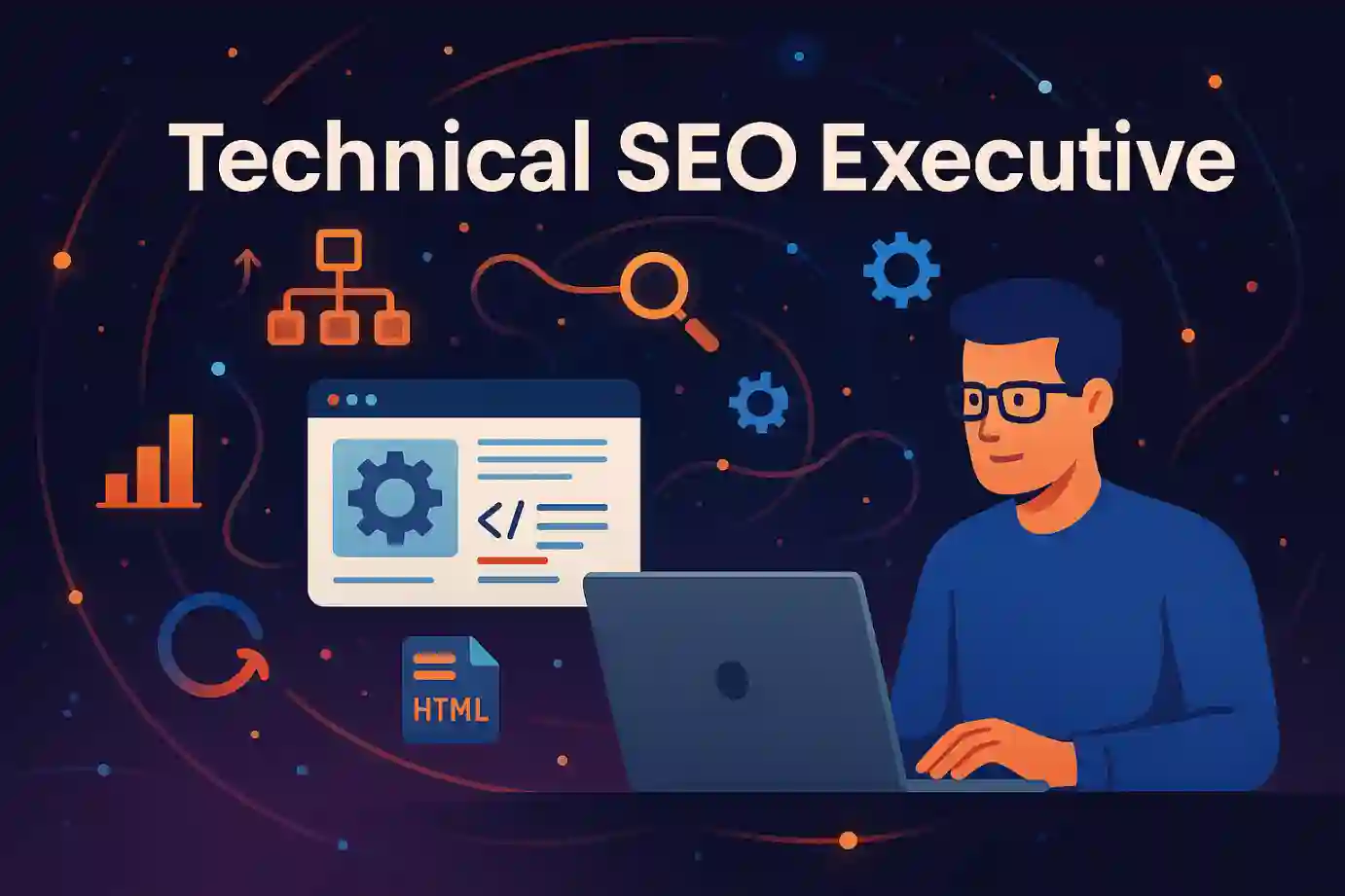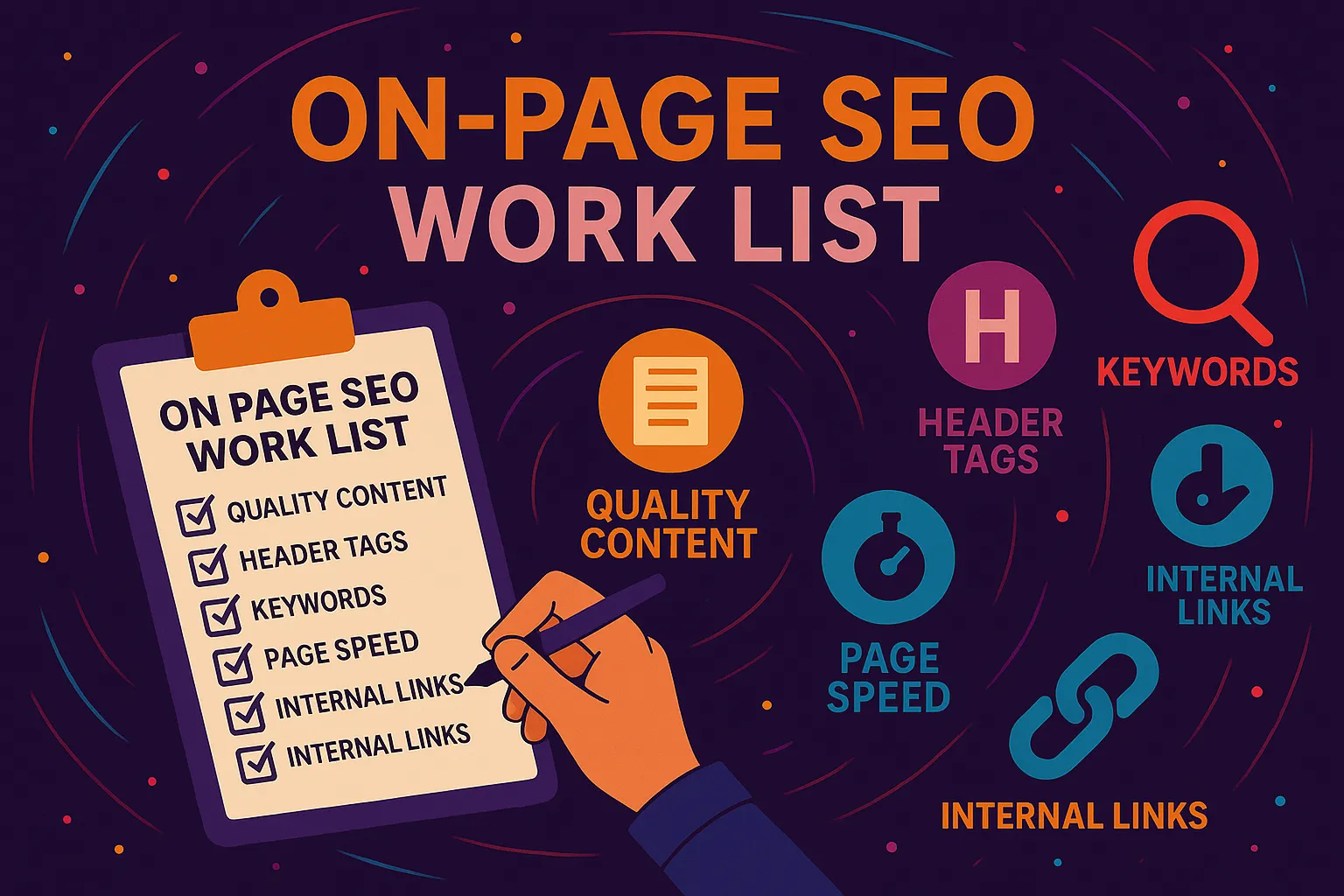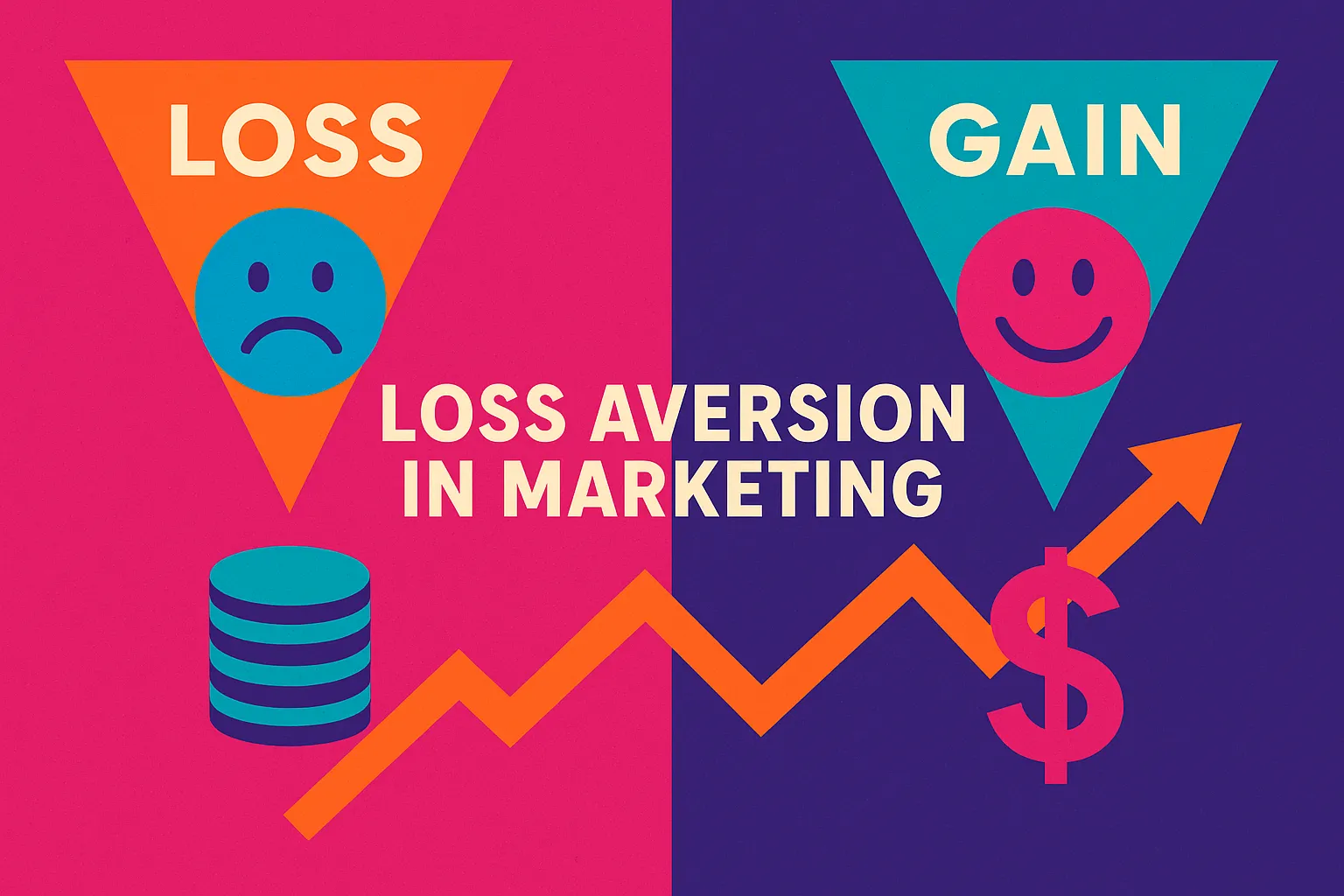What Is Technical SEO Work?
When we talk about technical SEO work, we’re talking about everything that happens behind the scenes to help your website get found on search engines like Google. It’s the structure, the signals, the speed, and the cleanliness of your site that makes it easier for bots to crawl, index, and rank your content.
Think of it like tuning a high-performance engine: no matter how shiny your car looks on the outside, it won’t win races if the parts under the hood are a mess. At Vibe Branding, we’ve spent over 10 years fine-tuning the backend performance of websites.
We’ve learned that even a small overlooked technical issue—like a broken link or missing sitemap—can tank your search visibility. That’s why technical SEO work is step one in every successful digital strategy we implement.
TL;DR
- Technical SEO work is the behind-the-scenes foundation of your website that ensures it performs well in search results.
- It covers things like crawlability, indexing, site speed, structured data, and mobile-friendliness.
- Without technical SEO, even the best content and backlink strategies may fail.
- Tools like Google Search Console, Ahrefs, and PageSpeed Insights are essential for diagnosing and fixing issues.
- Business owners and marketers can start the basics in-house, but expert help is often required for audits, migrations, and complex site structures.
Why Technical SEO Is the Bedrock of Search Rankings
You can have beautiful branding, clever copy, and killer content, but if Google can’t crawl your site properly or if your pages load slower than a snail, your rankings will suffer. We’ve seen this firsthand.
One of our clients had incredible articles with great backlinks, but traffic was flat. A quick technical SEO audit revealed slow load times, redundant redirects, and unoptimized mobile experience.
Fixing these alone doubled their organic traffic in three months. Search engines care deeply about user experience.
Slow load times? That’s a bounce.
Mobile issues? That’s a fail.
Redirect chains, duplicate content, or improper indexing instructions? That’s friction for search crawlers.
When you fix these barriers, your site becomes more accessible and easier to understand—for both people and bots. This is where technical SEO work truly shines.

The Key Components of Effective Technical SEO Work
Over the years, we’ve developed a checklist of must-haves for every technically sound website. While each site is unique, the following pillars are universal.
Site Speed: A fast website isn’t just good for SEO—it’s essential for keeping users engaged. Google considers site speed a ranking factor, and we’ve watched slow sites lose ground while lean, optimized ones gain visibility.
Mobile-Friendliness: With mobile-first indexing, your site’s mobile version is the one that matters most. We always test font sizes, tap targets, viewport settings, and responsiveness. A desktop-only site is invisible to a growing portion of your audience.
Crawlability: We regularly audit sites’ robots.txt files, internal linking, and navigation structure. If bots can’t crawl a page, it’s essentially invisible to search engines.
Indexing: It’s not enough for pages to exist—they need to be included in Google’s index. We use the URL inspection tool in Google Search Console and analyze canonical tags and sitemap coverage to make sure key pages are indexable.
Structured Data: Schema markup helps Google understand your content and present it better in search results. We implement schema for products, articles, reviews, and more.
Technical SEO Element | Why It Matters |
Site Speed | Affects bounce rate, UX, and rankings |
Mobile Usability | Primary way Google evaluates your site |
Crawlability | Ensures bots can access your content |
Indexing | Allows content to appear in search results |
Structured Data | Enables rich snippets and better SERP presence |
How to Audit Your Website for Technical SEO Issues
Auditing a website for technical SEO issues is like running a diagnostic test on a car. It reveals what’s working and what’s holding you back.
We start every engagement at Vibe Branding with a full technical SEO audit, and it consistently uncovers opportunities that content or design teams may have overlooked. We recommend starting with Google Search Console.
Check crawl errors, mobile usability, and Core Web Vitals reports. Then use Ahrefs Site Audit or Semrush to identify issues like duplicate content, missing alt text, slow-loading resources, or broken links.
Be sure to:
- Test your sitemap submission and robots.txt configuration
- Review URL parameters and canonical tags
- Analyze internal link depth and orphaned pages
- Check for crawl errors and redirect chains
- Identify pages blocked by noindex tags or disallowed in robots.txt
Audits aren’t a one-and-done deal either. We do them monthly for large websites and quarterly for smaller ones. Issues reappear as sites grow and change.
Stay ahead of them.
Tools We Rely On for Technical SEO Work
Let me be clear: the right tools don’t replace experience, but they do amplify it. We’ve spent years testing dozens of SEO tools, and we now have a tight toolkit that helps us diagnose and resolve technical issues fast.
Google Search Console is where we start. It tells us which pages are indexed, shows us Core Web Vitals performance, and flags mobile issues.
Ahrefs Site Audit and Semrush both offer deep crawls and prioritize errors that impact SEO. We also use:
- PageSpeed Insights for real performance diagnostics
- Lighthouse for detailed UX and performance metrics
- Screaming Frog for flexible site crawling and log analysis
- Schema.org Validator for checking structured data accuracy
Over time, we’ve even built internal dashboards to pull data from multiple sources and show us what needs attention most urgently. That’s the kind of process maturity that comes with a decade in the field.

How We Fix the Most Common Technical SEO Problems
If I had a dollar for every 404 error or redirect chain we’ve fixed, I could buy another agency. These common problems often go unnoticed but can drag down your whole site’s performance.
Fortunately, they’re also fixable.
Broken links are usually the result of deleted pages or bad updates. We use Ahrefs or Screaming Frog to find them, then redirect or update those links.
Redirect chains happen when one redirect points to another redirect. It’s bad for both crawl efficiency and user experience. We clean these up by pointing everything directly to the final destination.
Duplicate content might be accidental—like tag pages or pagination—or intentional. Either way, we use canonical tags to show search engines which version to index.
Noindex or robots.txt issues can quietly kill your visibility. One misapplied rule can hide an entire content section from Google. That’s why we manually review every disallow and noindex rule during audits.
Slow performance is usually tied to image bloat, unminified scripts, or missing caching. We compress images, lazy-load them, and use tools like Cloudflare or BunnyCDN to deliver assets faster.
And the beauty is—after fixing just a few of these issues, our clients usually see noticeable improvement within weeks. It’s not magic. It’s just technical SEO work done right.
How Often Should You Perform Technical SEO Maintenance?
One of the most common questions I get from clients is, “How often should we check our technical SEO?” And the answer depends on your website’s size and how often it changes.
But here’s our rule of thumb: if your business relies on organic traffic, you can’t afford to treat technical SEO work as a once-a-year task. For our larger enterprise clients or ecommerce platforms, we run audits monthly.
Their sites change constantly—new product pages, seasonal content, CMS updates. For local business or portfolio sites, quarterly is typically enough.
What matters most is that you make it part of your regular maintenance routine just like updating plugins or refreshing content. The web is dynamic.
What works today might not tomorrow. You might install a plugin that blocks bots without realizing it.
Or Google might roll out a Core Update that suddenly makes speed more important. Staying proactive keeps you competitive.
Trust me—we’ve saved businesses from catastrophic ranking losses simply by catching crawl errors early. We even set automated reports and alerts using tools like Ahrefs and GSC.
When something breaks, we’re the first to know. And that level of responsiveness is part of what sets Vibe Branding apart.
It’s not just about finding problems—it’s about catching them before they cause harm.
The Role of Core Web Vitals in Technical SEO Work
When Google made Core Web Vitals a ranking factor, it sent a loud message: user experience is now SEO. These metrics are technical but deeply tied to how people feel using your site.
And since technical SEO work is all about performance and access, Core Web Vitals fall squarely in our domain. The three main metrics—Largest Contentful Paint (LCP), First Input Delay (FID), and Cumulative Layout Shift (CLS)—each tell a different story about user experience. LCP measures loading speed.
FID measures responsiveness. CLS tracks visual stability. When a site scores poorly here, it means people are likely frustrated before they even engage with your content.
I remember working on a client’s blog that looked great—but the CLS was off the charts. The layout shifted every time an ad loaded, sending users scrambling to find where they left off.
We fixed this by reserving space for ad containers and optimizing image loads. The bounce rate dropped 28% overnight.
You can test your Core Web Vitals using Google PageSpeed Insights or in the Core Web Vitals section of Search Console. We also like Lighthouse for more granular reports.
And remember—these aren’t just numbers. They’re signals from Google telling you how happy your visitors are.

Should You Hire a Technical SEO Expert or Handle It In-House?
Here’s the million-dollar question—and one we hear all the time from marketing directors and founders alike. “Can’t I just do this myself?” And yes, to some degree, you can.
Especially the basics. But technical SEO work can get very deep, very fast. If your site is under 50 pages and you use a platform like Squarespace or Wix, you can likely handle foundational fixes yourself using built-in tools and plugins.
But the moment you’re dealing with thousands of URLs, custom development, multiple language versions, or migrations—it’s time to bring in an expert. At Vibe Branding, we’ve handled everything from cleaning up legacy site issues to preparing massive ecommerce platforms for international launches.
And here’s the truth: our clients bring us in not because they can’t do the work—but because they shouldn’t waste time trying to learn a discipline that takes years to master. Technical SEO is its own language.
It requires understanding how code, servers, browsers, and bots all interact—and how those interactions change weekly. So if you’re at a stage where SEO traffic matters, and you’re seeing gaps in performance or visibility, bring in a pro.
It’ll cost less in the long run than flying blind.
Final Thoughts
We’ve worked with everyone from startups to global brands, and if there’s one lesson we’ve learned, it’s this: technical SEO work is never “done.” It evolves.
It scales. It’s the heartbeat of your website’s visibility.
And it’s the difference between a site that exists and one that performs. This article is more than just a guide.
It’s a reflection of what we do every day at Vibe Branding—and how we help brands not just compete, but win. Our approach is always strategic, measurable, and driven by data.
We blend technical expertise with creative thinking, and that’s why clients stick with us.





